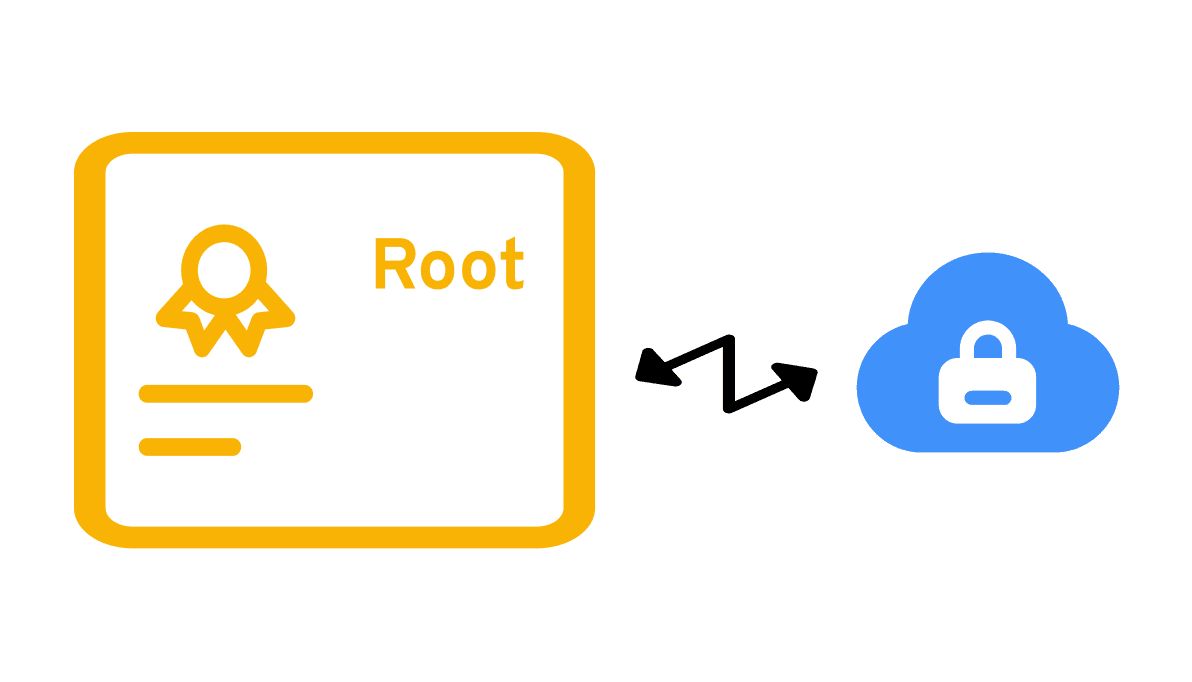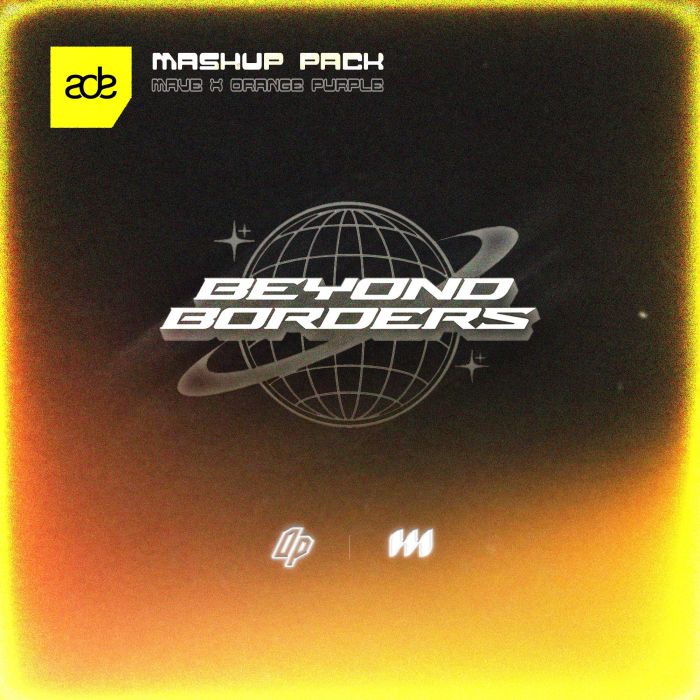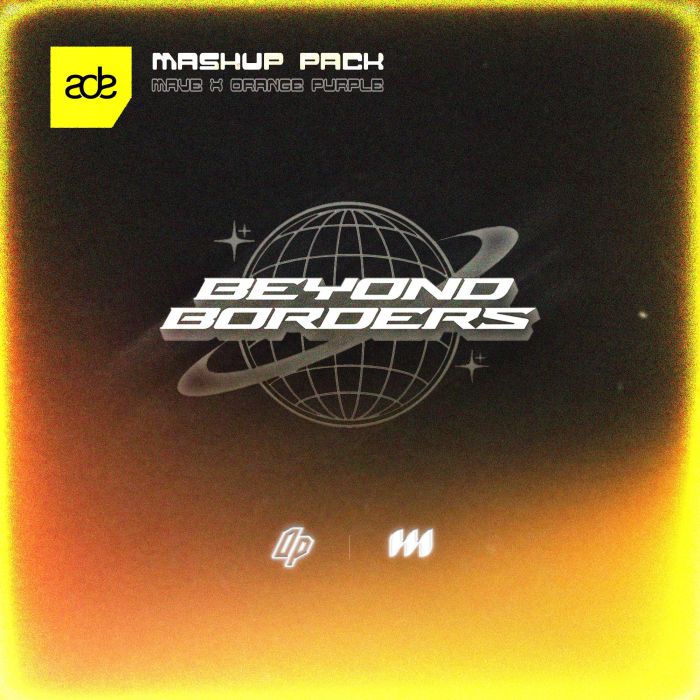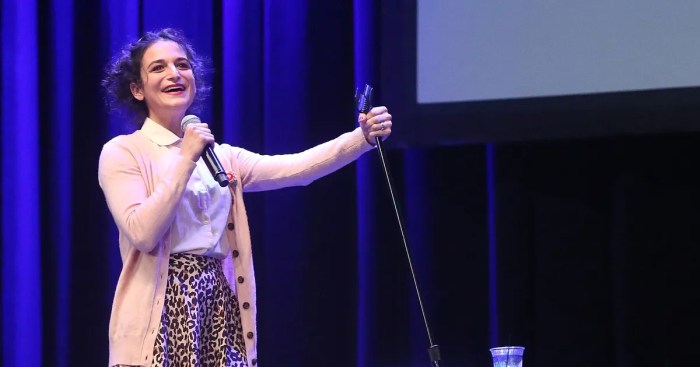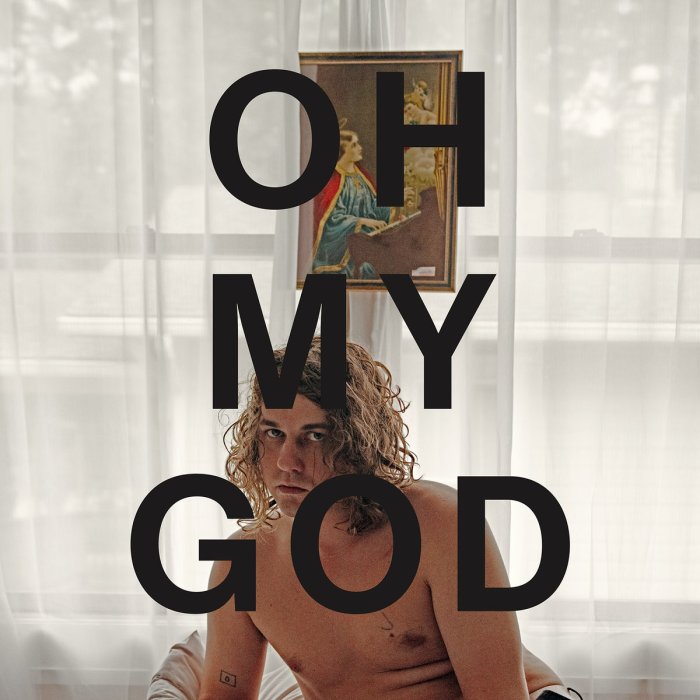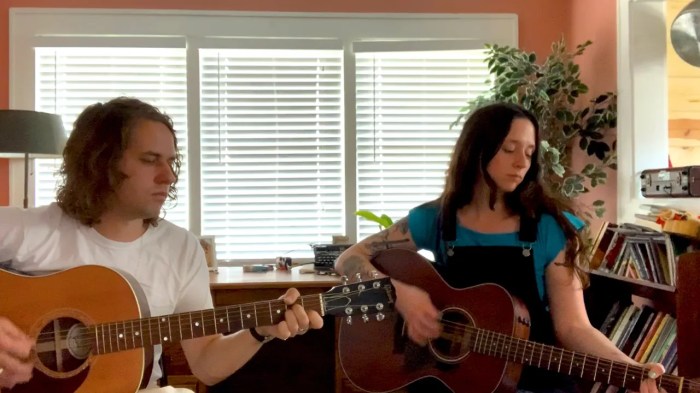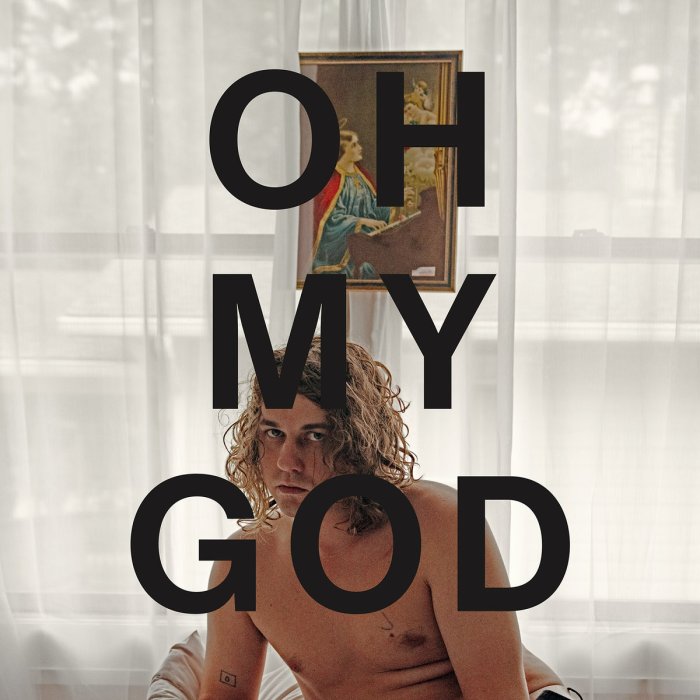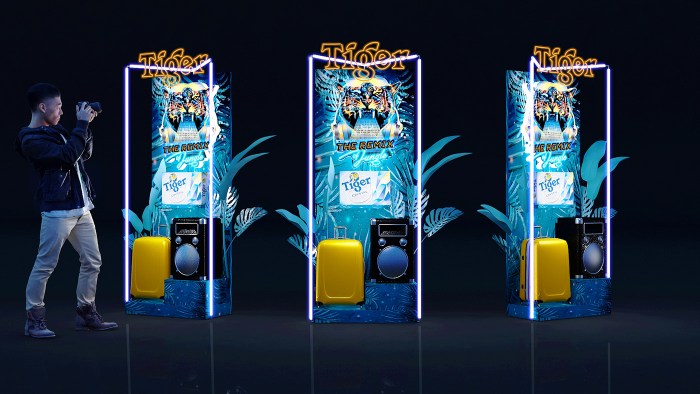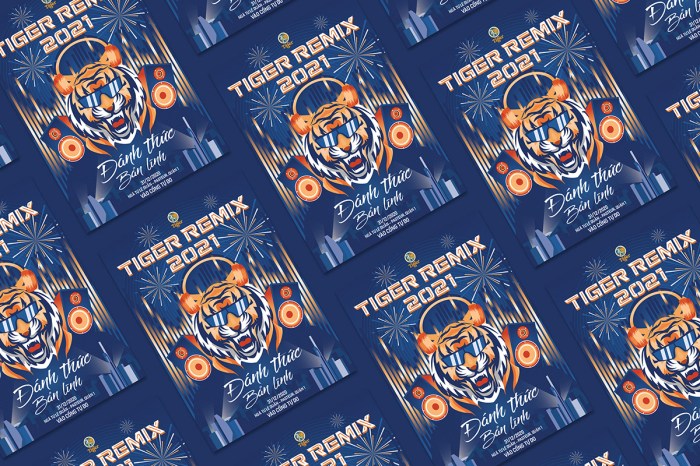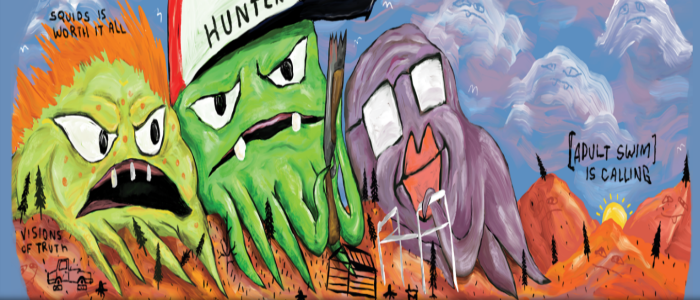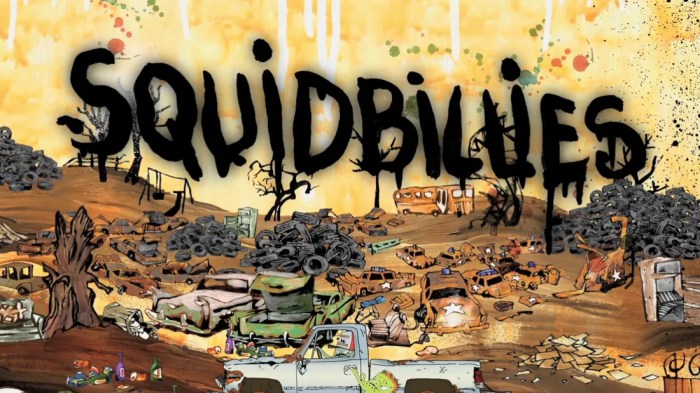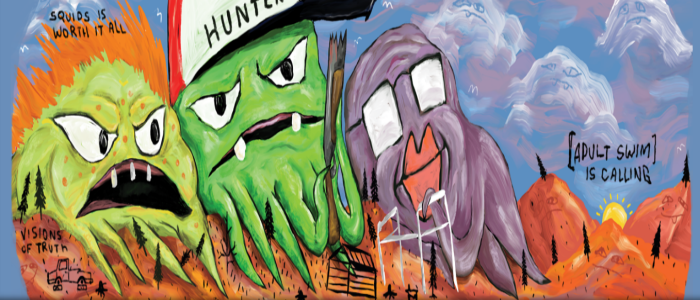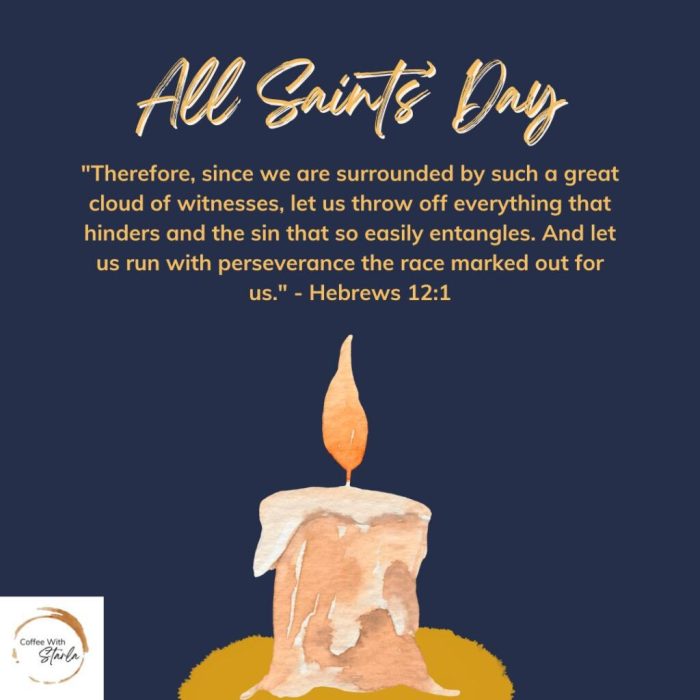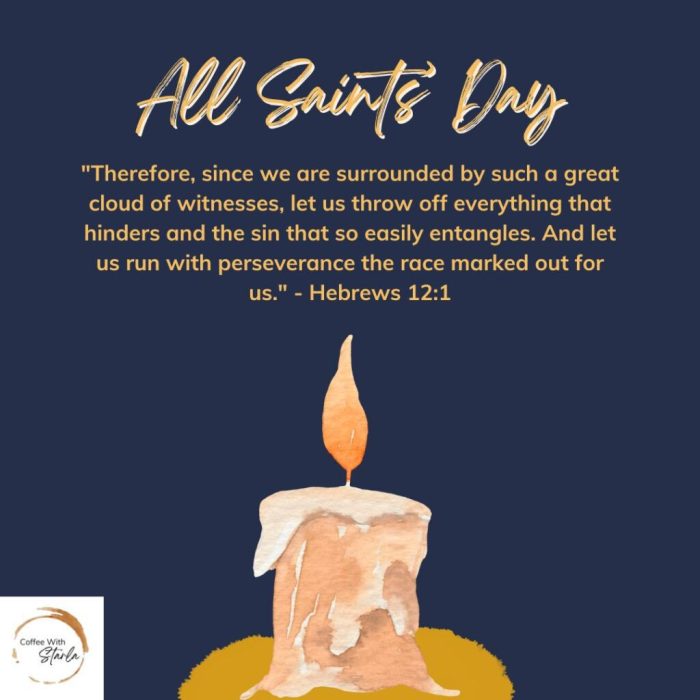Be Your Own Certificate Authority sets the stage for a fascinating exploration into self-sovereign identity. Imagine a world where you control your digital credentials, bypassing the need for a central authority. This approach empowers individuals to manage their own digital certificates, offering a unique blend of control and security.
This comprehensive guide will walk you through the process of establishing your own Certificate Authority, examining the technical aspects, security considerations, and legal implications. We’ll explore how self-signed certificates can be used for secure communication and personal data management, providing a glimpse into the potential applications for personal websites and online services. You’ll gain a clear understanding of the benefits and drawbacks, and compare this model to traditional certificate authorities.
Understanding Self-Sovereign Identity
Self-sovereign identity (SSI) is a revolutionary approach to managing digital identities, shifting the power from centralized authorities to individuals. This decentralized model empowers users to control their own personal data and digital credentials, much like having a personal, digital passport. It’s a significant shift from traditional methods, where third-party entities like banks or government agencies hold the keys to our digital identities.Self-sovereign identity systems rely on digital certificates, but in a fundamentally different way than traditional certificate authorities.
Instead of relying on a single, trusted entity to issue and verify credentials, SSI utilizes distributed ledger technology (like blockchain) and cryptographic techniques to create verifiable, portable credentials that individuals own and manage. This allows individuals to present their credentials to various organizations and services without revealing sensitive personal information directly.
The Concept of Self-Sovereign Identity
Self-sovereign identity (SSI) gives individuals complete control over their digital identities. This control extends beyond just usernames and passwords; it encompasses the ability to define and issue their own credentials, which are then verifiable by others. Individuals can create and manage digital certificates for various purposes, such as employment verification, educational credentials, or proof of identity.
Digital Certificates and SSI
Digital certificates are crucial components of SSI. They act as proof of identity or other verifiable information. Unlike traditional certificates issued by a central authority, SSI certificates are issued and managed by the individual, using cryptography to ensure their authenticity and integrity. These credentials can be used to prove various aspects of an individual’s identity or attributes, like a verified degree or employment history.
This verifiable data, securely stored, is crucial in the SSI framework.
Examples of SSI Usage
Individuals can use SSI for a variety of tasks without relying on a central authority. For instance, a student can issue a verifiable transcript to a prospective employer. The employer can then independently verify the credentials using the student’s issued certificate. Similarly, an individual can demonstrate proof of vaccination or other relevant data, without needing to rely on a centralized health authority.
This eliminates the need to submit personal information repeatedly to different entities.
Benefits of Self-Sovereign Identity Systems
- Enhanced Privacy and Control: Individuals have complete control over their data, choosing which information to share and with whom.
- Increased Security: Decentralized systems are often more resilient to breaches and attacks compared to centralized systems, as no single point of failure exists.
- Improved Efficiency: Verifying credentials becomes faster and easier, as individuals can present verifiable data directly to the relevant parties.
- Reduced Friction: The need for multiple verification steps is minimized, simplifying interactions with various organizations.
Drawbacks of Self-Sovereign Identity Systems
- Complexity: Implementing and managing SSI systems can be technically complex, requiring specialized knowledge and resources.
- Interoperability Issues: Different SSI systems may not always be compatible with each other, creating challenges in data exchange.
- Scalability Challenges: Large-scale adoption of SSI systems may present challenges in terms of handling a large volume of credentials.
- Trust and Validation: Ensuring the authenticity and reliability of credentials can be crucial and complex in a decentralized system.
Comparison to Traditional Certificate Authorities
| Feature | Traditional Certificate Authorities | Self-Sovereign Identity |
|---|---|---|
| Control | Centralized authority controls issuance and verification | Individuals control their own credentials |
| Data Privacy | Potential for data breaches and unauthorized access | Greater privacy and control over personal information |
| Security | Relies on the security of the central authority | Decentralized security mechanisms |
| Scalability | Can be challenging to scale for a large number of users | Potential for scalability through decentralized networks |
Traditional certificate authorities act as intermediaries, while SSI systems empower individuals to manage their own identities. This fundamental difference in control and data ownership is the core distinction.
Implementing Your Own Certificate Authority
Setting up your own Certificate Authority (CA) empowers you to issue digital certificates for your personal or organizational needs. This control allows you to manage trust and verify the authenticity of digital identities without relying on external authorities. This is crucial for building secure systems and establishing your own digital identity infrastructure.Creating a personal CA provides a secure way to manage digital certificates for various purposes, including secure communication channels, code signing, and verifying identities within your own ecosystem.
This approach enhances the overall security and control over your digital interactions.
Designing the Personal CA Infrastructure
The design phase involves several key considerations for your personal CA. This includes defining the scope of your CA, establishing policies for certificate issuance, and selecting the appropriate cryptographic tools.
Generating and Managing Digital Certificates
Generating digital certificates involves using cryptographic tools like OpenSSL. A private key is generated, paired with a public key, which is then digitally signed by the CA. This process creates a certificate containing the public key and other relevant information. Managing certificates includes keeping track of their validity periods and revocation status, essential for maintaining trust. This process helps ensure that only valid certificates are used, preventing malicious actors from impersonating legitimate entities.
Technical Requirements and Considerations
Essential technical requirements for a personal CA include a robust operating system, secure storage for private keys, and a clear understanding of cryptography principles. The selection of cryptographic algorithms and key lengths directly impacts the security strength of your certificates. The CA should also adhere to security best practices and integrate into your existing systems smoothly.
Securing Your Personal Certificate Authority
Securing your personal CA is paramount. This includes employing strong passwords and access controls, regularly backing up critical data, and implementing intrusion detection mechanisms. Furthermore, employing multi-factor authentication for administrators and implementing regular security audits can enhance the security posture of your CA.
Best Practices for a Secure Personal CA
Maintaining a secure personal CA necessitates adhering to several best practices. These include using strong passwords, implementing robust access controls, and regularly updating software components. Regular audits and backups are crucial for mitigating risks and ensuring data integrity.
Types of Digital Certificates and Their Use Cases
A comprehensive understanding of different certificate types and their applications is vital. This knowledge allows for the appropriate selection of certificates for specific needs. This table Artikels the various types and their common use cases:
| Certificate Type | Use Case |
|---|---|
| SSL/TLS Certificate | Secure web communication (HTTPS) |
| Code Signing Certificate | Verifying the authenticity of software |
| Email Signing Certificate | Authenticating email senders |
| Client Certificate | Verifying client identity in applications |
| Server Certificate | Verifying server identity in applications |
Practical Applications and Use Cases
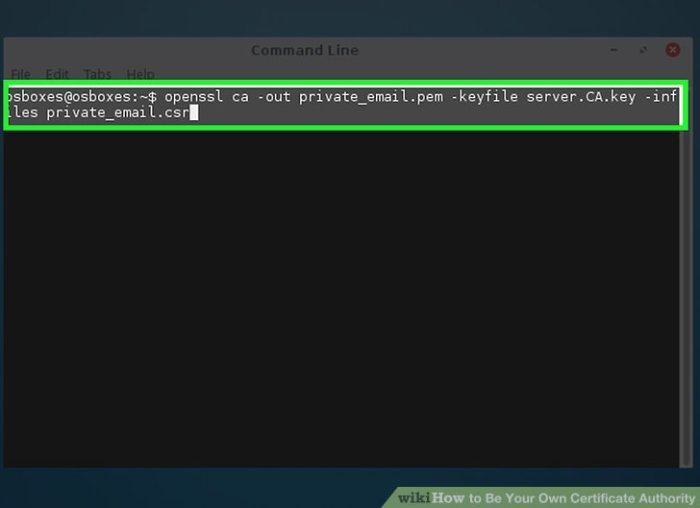
Self-sovereign identity, where individuals control their own digital credentials, opens exciting possibilities for secure communication and personal data management. This control extends beyond simply storing information; it empowers individuals to decide who can access what data and under what conditions. By being their own certificate authority, individuals gain a layer of security and privacy previously unavailable in the digital realm.This approach empowers individuals with granular control over their digital identities and the associated data.
This includes controlling access to personal information and ensuring only authorized parties can access it. This control over personal data is crucial in a world increasingly reliant on online interactions and digital services.
Scenarios for Individual Certificate Authorities
Individuals might need to be their own certificate authority in various scenarios, including when they require heightened security for personal communications or transactions. For instance, secure communication channels between a client and a freelancer or a secure online voting system can be facilitated by self-signed certificates.
Secure Communication with Self-Signed Certificates
Self-signed certificates can be used to create secure communication channels. For instance, a freelancer can use a self-signed certificate to encrypt communications with clients, ensuring confidentiality and integrity. This method can protect sensitive information exchanged between parties. Furthermore, these certificates can be employed for authentication purposes, verifying the identity of the communicating parties. This is particularly useful in situations where a third-party intermediary is not involved or is deemed unreliable.
Taking control of your digital identity is key, and that’s where being your own Certificate Authority comes in. It’s about owning your encryption and security, which is super important these days. This aligns perfectly with the latest releases from various artists on the Kompakt label, like new releases various artists kompakt total 12 , highlighting the importance of secure digital transactions and the evolution of sound.
Ultimately, empowering yourself with this knowledge and control is a powerful step towards a more secure online experience. Being your own CA is about taking ownership and ensuring your digital footprint is exactly as you want it.
Personal Data Management and Secure Transactions
Self-sovereign identity, using self-signed certificates, facilitates secure transactions and personal data management. An individual can securely store and manage their medical records, financial data, or other sensitive information using their own certificate authority. Access to this data can be controlled by the individual, permitting only authorized parties to view or modify it.
Implementation for Personal Websites and Online Services
Individuals can implement this model for their personal websites and online services. For example, a personal blog or website could utilize a self-signed certificate to encrypt communications and protect sensitive information. The user can control the access to the data stored on the website.
Identity Validation Methods in Self-Sovereign Identity Systems
Several methods exist for validating user identity in self-sovereign identity systems. These methods include using public key cryptography, where a user’s public key is associated with their identity. Other methods involve employing digital signatures, where a user digitally signs data to verify its authenticity. Furthermore, verifiable credentials can be used to provide evidence of identity and specific attributes.
This includes, for example, demonstrating proof of vaccination or other credentials. The chosen method should align with the security requirements and complexity of the specific application.
Security Considerations and Challenges
Self-signed certificates, while offering flexibility in managing your own identity, introduce significant security risks. Understanding these risks and implementing appropriate mitigation strategies is crucial for maintaining trust and preventing potential compromises. This section delves into the security considerations surrounding personal certificate authorities (CAs) and Artikels best practices to enhance their resilience.
Security Risks of Self-Signed Certificates
Self-signed certificates, lacking validation by a trusted third party, pose inherent security vulnerabilities. A primary risk is the potential for impersonation. Malicious actors could create a fraudulent certificate that mimics a legitimate entity, leading to compromised communications and data breaches. Without a trusted intermediary, users have no mechanism to verify the authenticity of the certificate. Consequently, sensitive information transmitted to the purported entity could be intercepted and exploited.
Mitigation Strategies and Certificate Revocation Lists
Effective mitigation strategies are essential to minimize the risks associated with self-signed certificates. One critical measure is implementing a certificate revocation list (CRL). CRLs are publicly accessible databases containing a list of certificates that have been revoked. Clients can consult these lists to verify that a certificate is still valid before establishing a secure connection. Regularly updating the CRL is paramount to maintaining its efficacy in identifying revoked certificates.
Public Key Infrastructure in Self-Sovereign Identity
Public key infrastructure (PKI) plays a vital role in self-sovereign identity. A robust PKI, even for a personal CA, provides a structured framework for managing certificates and verifying their authenticity. It defines the processes and procedures for issuing, managing, and revoking certificates, thereby increasing trust and security in the identity ecosystem. A well-designed PKI establishes a clear chain of trust.
Thinking about being your own Certificate Authority? It’s a powerful concept, but sometimes, like with Janelle Monáe’s exciting casting in the upcoming Harriet Tubman biopic, janelle monae tapped for harriet tubman biopic , it’s inspiring to see how creativity and self-belief can lead to big things. Ultimately, embracing this idea of self-reliance is key to being your own Certificate Authority.
Challenges of Managing a Personal Certificate Authority
Managing a personal certificate authority involves a range of operational challenges. Maintaining the integrity of the certificate database, ensuring timely updates, and preventing unauthorized access to the private key are crucial aspects of management. Implementing and adhering to strict access control mechanisms and regular security audits are essential to avoid compromise. Furthermore, complying with legal and regulatory requirements, especially in regulated industries, is a critical challenge.
Security Best Practices for Personal Certificate Authorities
Implementing a robust security posture is essential for personal CAs.
| Practice | Description |
|---|---|
| Strong Key Management | Employing strong, cryptographically secure key generation and storage techniques, using hardware security modules (HSMs) where possible, and protecting private keys from unauthorized access are paramount. |
| Regular Audits and Security Assessments | Conducting regular security audits and penetration testing is crucial to identify vulnerabilities and weaknesses in the CA system. This ensures that the CA is robust and resilient against potential threats. |
| Robust Access Control | Implementing strict access control mechanisms to restrict access to the CA system and certificate management tools is essential to limit the potential damage from unauthorized access. |
| Secure Certificate Revocation | Maintaining an accurate and up-to-date certificate revocation list (CRL) and utilizing online certificate status protocol (OCSP) are vital to quickly identify and revoke compromised certificates. |
| Compliance with Regulations | Adhering to relevant industry and legal regulations regarding data security and certificate management is crucial, particularly in regulated industries. |
Tools and Technologies
Building your own Certificate Authority (CA) requires a solid understanding of the underlying cryptographic tools and technologies. This section delves into the software, algorithms, and programming languages that empower the creation and management of self-signed certificates. It also examines the vital role of digital signatures in verifying identities within this system.
Software and Tools for Certificate Creation
Tools like OpenSSL are widely used for managing digital certificates. OpenSSL provides a comprehensive suite of utilities for generating, managing, and verifying certificates. It supports various cryptographic algorithms and formats, making it a robust choice for a personal CA. Other tools, while perhaps less feature-rich, offer specialized functionalities tailored to specific needs.
Cryptographic Algorithms in Personal CAs
Cryptographic algorithms underpin the security of a personal CA. These algorithms determine the strength and type of encryption used. For example, RSA (Rivest-Shamir-Adleman) is a widely used asymmetric algorithm for key generation and digital signatures. Other options include elliptic curve cryptography (ECC), offering potentially stronger security with smaller key sizes. The selection of algorithms depends on factors like the desired level of security and the computational resources available.
Open-Source Libraries for Building a CA
Numerous open-source libraries facilitate the implementation of a personal CA. Python libraries like `cryptography` provide a user-friendly interface for working with cryptographic primitives. These libraries often handle the intricacies of certificate generation, key management, and signature verification, reducing the development burden. Similarly, libraries in other languages, like Java or Go, are available, each with its strengths and weaknesses.
Digital Signatures and Identity Verification
Digital signatures are crucial for verifying the authenticity and integrity of certificates. They employ a private key to create a unique signature for each certificate, which is then verified using the corresponding public key. This process ensures that the certificate hasn’t been tampered with. A properly implemented digital signature scheme provides a strong mechanism for verifying the identity of the certificate holder.
Programming Languages for CA Implementation, Be Your Own Certificate Authority
Several programming languages are suitable for developing a personal CA. Python’s readability and extensive libraries, combined with its cryptographic support, make it a popular choice. Java’s robust ecosystem and security features make it suitable for larger-scale implementations. Languages like Go, with its performance characteristics, are also appropriate for high-performance CA applications.
Thinking about being your own Certificate Authority? It’s about taking control of your digital identity, much like how the Cure curated the exciting new Pasadena Daydream Festival. the cure curate new pasadena daydream festival showcases a unique artistic vision, and similarly, taking charge of your digital certificates allows you to define your online presence with precision. Ultimately, being your own CA is about freedom and ownership in the digital world.
Legal and Regulatory Aspects
Navigating the legal landscape of self-sovereign identity, particularly when issuing your own certificates, requires careful consideration. This section delves into the legal implications, regulatory compliance, and potential liabilities associated with personal certificate authorities. Understanding the nuances of data privacy and security within this context is crucial for building trust and avoiding legal pitfalls. Different jurisdictions often have varying legal and regulatory frameworks, requiring careful examination.
Legal Implications of Self-Signed Certificates
Self-signed certificates, while offering flexibility, introduce legal implications. Their lack of third-party verification can raise questions of trust and authenticity. This lack of verifiable identity can lead to issues in situations where legal documentation or transactions require a validated digital identity. For instance, if a self-signed certificate is used to sign a contract, its validity and enforceability might be challenged in court.
The legal implications depend heavily on the specific jurisdiction and the intended use case.
Relevant Regulations and Compliance Considerations
Several regulations and standards touch upon digital identities and certificates. GDPR, CCPA, and other data privacy regulations, for example, dictate how personal data must be handled and secured. Compliance with these regulations is paramount for managing a personal certificate authority, as misuse of personal data can lead to substantial penalties. Organizations and individuals operating within the regulated sectors need to carefully evaluate and implement measures that meet the requirements of these regulations.
Potential Legal Liabilities Associated with Managing a Personal Certificate Authority
Managing a personal certificate authority comes with potential legal liabilities. Issues such as certificate revocation, compromised keys, or misrepresentation of identity can result in legal action. Furthermore, liability could arise if the self-signed certificate is used in a transaction or interaction that causes harm or financial loss. It’s important to have clear terms of use and disclaimers in place to mitigate potential liabilities.
Ensuring Data Privacy and Security
Data privacy and security are paramount when implementing a self-sovereign identity system. The handling of personal data requires strict adherence to data protection principles. This includes implementing strong encryption, access controls, and regular security audits. Transparent data policies and user consent mechanisms are essential to ensure user trust and maintain compliance with relevant regulations. An example of this principle is the use of end-to-end encryption to protect user data from unauthorized access.
Comparison of Legal and Regulatory Frameworks in Different Jurisdictions
Different jurisdictions have varying legal and regulatory frameworks concerning digital identities and certificates. For instance, the European Union’s GDPR mandates strict data protection requirements, while other jurisdictions may have less stringent regulations. This necessitates a thorough understanding of the legal landscape in the specific jurisdictions where the system will be used and complying with all relevant local laws.
The US has a more fragmented regulatory environment, with varying state and federal laws governing data privacy. Thorough research is essential for each specific jurisdiction and use case.
Future Trends and Developments
Self-sovereign identity (SSI) is rapidly evolving, driven by advancements in blockchain technology, decentralized identifiers (DIDs), and emerging web3 applications. This dynamic environment necessitates a forward-looking perspective to understand the potential future landscape of personal certificate authorities. The focus on user control and trustless interactions is likely to reshape how individuals manage their digital identities.
Emerging Technologies in Self-Sovereign Identity
The realm of self-sovereign identity is increasingly intertwined with a diverse array of emerging technologies. These technologies are rapidly transforming how individuals manage and utilize their digital identities, and will undoubtedly influence the future of personal certificate authorities.
- Decentralized Identifiers (DIDs): DIDs are fundamental to SSI, enabling verifiable credentials to be issued and validated without a central authority. Their use facilitates trustless interactions by securely linking identities to verifiable information. This decentralized approach enhances user control and fosters greater trust compared to traditional centralized systems. Examples include DID specifications from W3C, enabling interoperability and facilitating the seamless exchange of verifiable credentials across various platforms.
- Blockchain Technology: Blockchain’s immutability and transparency play a crucial role in securing and validating verifiable credentials within SSI systems. It facilitates secure storage and management of credentials, ensuring their authenticity and integrity. The use of blockchain for recording and verifying credentials strengthens the overall trustworthiness of the system. For instance, blockchain-based systems are being used for tracking vaccination records, academic transcripts, and professional certifications.
- Web3 Applications: Web3 applications are built on decentralized technologies and provide opportunities for greater user control and transparency. These applications leverage SSI for seamless user authentication and access control, creating a more secure and user-friendly digital experience. Consider the potential for decentralized social media platforms that rely on SSI for user verification and content authentication.
- Verifiable Credentials (VCs): VCs represent a crucial component of SSI, enabling the secure issuance and verification of digital credentials. VCs can be used for various purposes, such as academic transcripts, professional certifications, and proof of vaccination. VCs, when integrated with decentralized systems, empower users with the ability to easily share and verify credentials without relying on intermediaries.
Potential Future Applications of Personal Certificate Authorities
Personal certificate authorities (PCAs) are likely to find applications in diverse sectors, expanding beyond the initial use cases. The focus will remain on empowerment, control, and user experience.
- Healthcare: PCAs can be utilized to manage and share sensitive medical records securely and efficiently. This empowers patients with control over their health information and facilitates seamless data exchange between healthcare providers.
- Education: PCAs can streamline the management of academic records, allowing students to easily share transcripts and certifications with potential employers or educational institutions.
- Employment: PCAs can be leveraged for securely verifying professional qualifications, skills, and experience, improving the efficiency and effectiveness of the recruitment process. This could lead to a more transparent and verifiable job market.
- Government Services: PCAs can improve the accessibility and efficiency of government services by enabling secure verification of identities and credentials. This could include streamlined applications for benefits, permits, and other government services.
Evolution of Self-Sovereign Identity Systems
SSI systems are expected to become more integrated and interoperable, fostering greater trust and seamless user experiences. The focus on user control and empowerment will be a defining characteristic.
- Interoperability: Greater interoperability between various SSI platforms will become crucial, allowing users to seamlessly exchange credentials across different systems and services. This will enhance the usability and adoption of SSI systems.
- User-Friendliness: Future SSI systems will prioritize user-friendliness and ease of use, making the technology accessible to a wider range of users. This includes intuitive interfaces and simplified credential management tools.
- Decentralization: The trend toward decentralization will continue, with more emphasis on user control and reduced reliance on central authorities.
Ending Remarks: Be Your Own Certificate Authority

In conclusion, establishing your own Certificate Authority offers a compelling alternative to traditional methods, empowering individuals to take control of their digital identities. While there are security considerations and legal nuances to navigate, the potential benefits are significant, particularly in areas like personal data management and secure online interactions. This model provides a framework for a future where individuals have greater autonomy and control over their digital footprint.
We’ve covered the essential elements, but the journey to understanding and implementing this approach is ongoing, and we encourage you to explore the ever-evolving landscape of self-sovereign identity.
